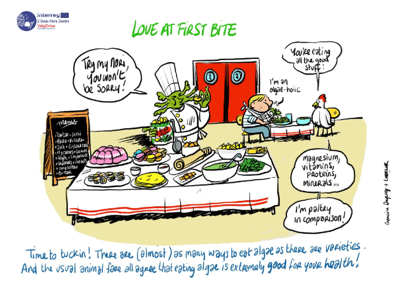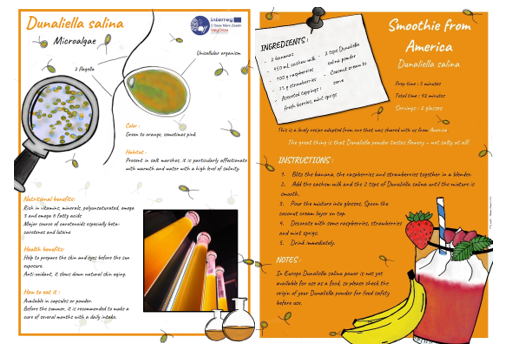EATING ALGAE AS A REGULAR PART OF A EUROPEAN DIET? IMPROVING THE GENERAL PUBLICS' LITERACY OF ALGAE TO ENCOURAGE A CHANGE IN CONSUMER EATING HABITS
Introduction
Eating seaweed as a regular part of the diet? Not for most Europeans - not yet, anyway. The ValgOrize research project co-funded by the Interreg 2 Seas European programme hopes to change that by stimulating seaweed production and consumption in Europe.
To feed the growing world population, 50 to 70% more food must be produced by 2050. The sustainable cultivation of marine organisms such as algae can play an important role in feeding the world.
Worldwide, approximately 90% of algae are used for food applications. The European Union only represents a really small part of the worldwide production (less than 1% of the global production volume) and market. A number of obstacles stand in the way of further introduction. One of them is a European consumer reluctance to eat algae because of the limited knowledge about their vitamin and mineral content, food applications, how to cook them, cultivation methods, prejudice about taste and smell and association with beach debris.
Our method
Before determining the communication campaign and educational tools to reach out to the general public, desk and market research and expert interviews have been carried out to find out about public perception of algal consumption, consumer motivations and the food trends. The results have shown that the European consumers in the North Sea basin are motivated first of all by the practicality to find and cook algae, attractive pricing and adapted packaging. The study by the North Sea Farmers has further shown that adapting algae products to the western palate has an important role in the European product development and that the current European food landscape is subject to several trends and developments. The main trends that could help increase public awareness of seaweed and microalgae consumption have been identified: the globalised cuisine that seems to create awareness of algae as food, the overwhelming presence in the modern European diet of Asian seaweed products such as sushi or wakame salad, the consumer openness to try new types of food, the consumer awareness of the impact of food on their health and on the planet, the popularity of health-enhancing food with nutritional benefits, the search for alternative protein sources, the guarantee of high quality and sustainable cultivation methods.
Our tools to improve consumer algae literacy
Based on these research findings, the ValgOrize project has been developing communication and learning tools to improve the European consumers’ perception of seaweed and algae and the market acceptance. They are circulated on social media, in partner organisations newsletters and other public outreach channels.
A comic strip was published to illustrate how algae arrives on a consumer’ plate in stages: cultivation of micro and macro algae, harvesting, processing, consumption (culinary benefits and health benefits of seaweed), as well as the role of algae in the treatment of polluted water.
A sequence of tasting events for the general public have been scheduled on community major cultural events such as local festivals, The European Maritime Day annual conference and the World Ocean Day.

